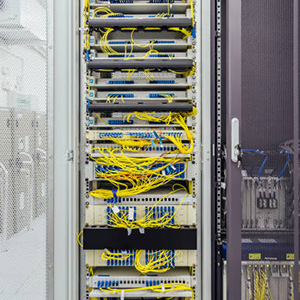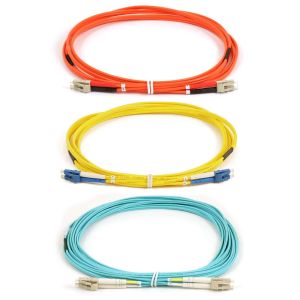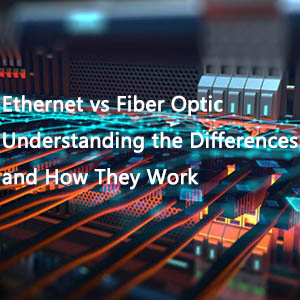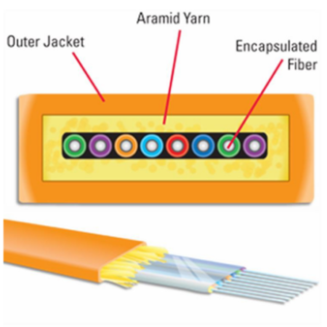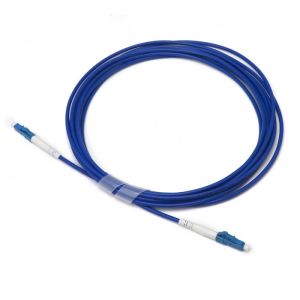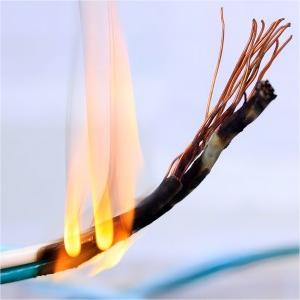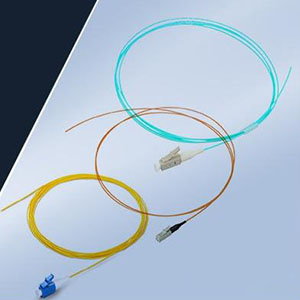Fiber Optic Cables and Fiber Pigtails are two commonly used connectors in fiber optic communications. Although they look similar, they have significant differences in function, structure, and application scenarios.Fiber Optic Cables are generally used for optical signal transmission between devices. They are designed with fiber optic connectors at both ends, which can be quickly plugged and connected. In contrast, Fiber Pigtails are fiber segments with connectors on one end and bare fibers on the other end, which are used for fusion splicing with Fiber Optic Cables and are usually used in fiber optic distribution frames or terminal boxes.
The correct use of Fiber Optic Cables and Fiber Pigtails is crucial, which can not only improve the efficiency of fiber optic transmission, but also avoid unnecessary losses and failures. This article will analyze their structural differences, common application scenarios, and precautions in detail to help users better understand and choose suitable products to ensure the efficient and stable operation of fiber optic networks.

I. Definition of Fiber Optic Cables and Fiber Pigtails
Fiber Optic Cables are cables used to connect desktop computers or devices, featuring a thicker protective layer, commonly used for connections between terminal boxes and optical transceivers. Fiber Pigtails, on the other hand, are fibers with only one end equipped with a connector, and the other end is a fiber connector, usually spliced with other fiber cores inside a fiber terminal box.
II. Types of Fiber Optic Cables
Fiber Optic Cables can be divided into single-mode and multimode based on transmission mode. Single-mode patch cords are typically yellow, with blue connectors and protective sleeves, operating wavelengths of 1310nm/1550nm, and transmission distances of up to 10km/40km. Multimode patch cords are orange or aqua blue, with beige or black connectors and protective sleeves, operating wavelengths of 850nm, and transmission distances of about 500m.
Based on connector types, Fiber Optic Cables can be categorized as follows:
- LC connector: Square connectors with a modular plug (RJ) latch mechanism, commonly used in routers.
- SC connector: Rectangular connectors with a plug-and-jack fastening method, commonly used in routers and switches.
- ST connector: Round connectors with a screw fastening method, commonly used on fiber distribution frames.
- FC connector: Round fiber connectors with a metal material, screw fastening, commonly used on the ODF side.
- MPO/MTP connector: Connectors made of high-precision plastic molding, with a compact design suitable for high-density fiber optic lines.
III. Types of Fiber Pigtails
Fiber Pigtails are also divided into single-mode and multimode, with single-mode Fiber Pigtails having a yellow outer sheath, operating wavelengths of 1310nm/1550nm, and long transmission distances. Multimode pigtails have an orange/aqua blue outer sheath, operating wavelengths of 850nm, and short transmission distances.
The connector types for Fiber Pigtails include:
- LC connector: Smaller size, improving the space utilization of fiber distribution frames.
- SC connector: Made of engineering plastic, affordable, and easy to operate.
- ST connector: Exposed core, suitable for 10Mbps Ethernet systems.
- FC connector: Metal material, durable, commonly used on distribution frames.
IV. Applications of Fiber Optic Cables and Fiber Pigtails
Fiber Optic Cables are widely used for connections between fiber distribution frames, switches, desktop computers, and from fiber information outlets to desktop computers. Fiber Pigtails are mainly used in fiber optic communication systems, fiber access networks, fiber data transmission, and other fields.
V. Precautions for Use
- Ensure that the wavelengths of the optical modules connected by Fiber Optic Cables are consistent to ensure the accuracy of data transmission.
- Reduce the coiling of Fiber Optic Cables during wiring to reduce signal attenuation.
- Keep the connectors of Fiber Optic Cables clean and encase them with protective sleeves after use.
- Fiber Pigtails are delicate and not heat-resistant; avoid using them in high-temperature environments.
Through this article, we have explored in depth the differences between Fiber Optic Cables and Fiber Pigtails and the precautions for their use. Choosing the right fiber optic devices is crucial to the overall performance of the fiber optic network. Fiber optic patch cords are suitable for quick connections between devices, while pigtails are mostly used for terminal fusion splicing of optical cables. Understanding their characteristics and reasonable use methods can effectively reduce light loss and improve transmission stability, thereby extending the service life of equipment and networks.
In the future, with the continuous development of fiber optic technology, the performance of fiber optic patch cords and pigtails will continue to improve, and continue to provide support for efficient and reliable fiber optic communication systems. If you are facing the need for fiber optic connections, it is recommended to choose the right product according to the actual application scenario to ensure the best results.

